It had been nearly 20 years since I stepped into a Penguin when I toted one down to Bristol (Rhode Island) Yacht Club last winter for a day of “frostbite” racing. I had owned a Penguin years earlier, and I had been able to buy it back, intending to restore it to sail with my daughter some day. But in the meantime, a good friend from Long Island offered the use of his Penguin, which had hung from his garage rafters for 15 years. “I’d love to see her sailing again,” he said. I pieced it together that brisk Saturday and made it out to the race course just in time for the first start.
Maybe it was the nostalgia that had me so excited to be surrounded by so much varnish in such a little boat, one of five wooden Penguins on the starting line that day. Or perhaps it was because my co-skipper for the boat, which is sailed double-handed, was Tim Fallon, team race world champion and Beetle Cat guru from Cape Cod. Either way, watching the plumb bow punch through the dark northwesterly wavelets and feeling the windward chine lock into a wave downwind as we leaned out to weather was just plain ol’ fun and more challenging than I had remembered.
The Penguin has been one of the most prolific home-built classes in the country. “Every time I look at one of these beautiful boats, I smile,” said a 70-year-old gentleman on the pier that afternoon who had raced them in the 1950s.
 Photo by Peter Airlie
Photo by Peter AirlieDesigned by Philip Rhodes in 1933, the Penguin has had an enduring legacy as a racing dinghy, with more than 9,700 built. The plywood, hard-chined boats are simple to build.
Philip Rhodes designed the Penguin in 1933 as a contender for the frostbiting fleets of Manhasset Bay and Larchmont, New York, but his design lost out to one by Olin Stephens. The boat, 11′ 5″ long with 72 sq ft of sail, has hard chines, making it easy to plank with plywood. In 1938, Rhodes dusted off the design when a group of Potomac River sailors approached him for a frostbiter. They built 12 boats together in their basements and raced on winter weekends.
“Yachting magazine sent a reporter to cover one of the regattas in 1939,” says Charles Krafft, whose father completed hull No. 6 in that original fleet. “The magazine was in competition with The Rudder, which had just published the plans for the Snipe. So they did a piece on the Penguin and told where to get plans. It went from a few fleets to a national class overnight.”
More than 9,700 Penguins have been built. Hull No. 1 is on exhibit at the Chesapeake Bay Maritime Museum. Most of the boats are wood, whether built by amateurs or professionals. The class remained popular for winter racing for more than 40 years, until the advent of self-rescuing fiberglass racing dinghies.
“It’s hard to sell a Penguin as a safe, fast boat,” says Jonathan Bartlett, a Maryland sailmaker who got into the class to teach his two daughters how to race. “If you roll over, you’re done.” Later, fiberglass Penguins based on one built by Bill Burtis had false bottoms that allowed self-rescue. They proved fast in the Long Island fleet, Krafft says, so wooden Penguin owners lost interest. On the Chesapeake, however, class restrictions neutralized the benefits of the ’glass boats, and the fleet remained comparatively strong.
“You hear less about the Penguin now than in the 1980s,” Krafft says. There were 25-boat fleets on any given winter Sunday in western Long Island Sound and 35-boat international championships. “We had a surge in the 1990s with baby boomers who grew up sailing them taking their kids out,” he says. “Now those kids are older.”
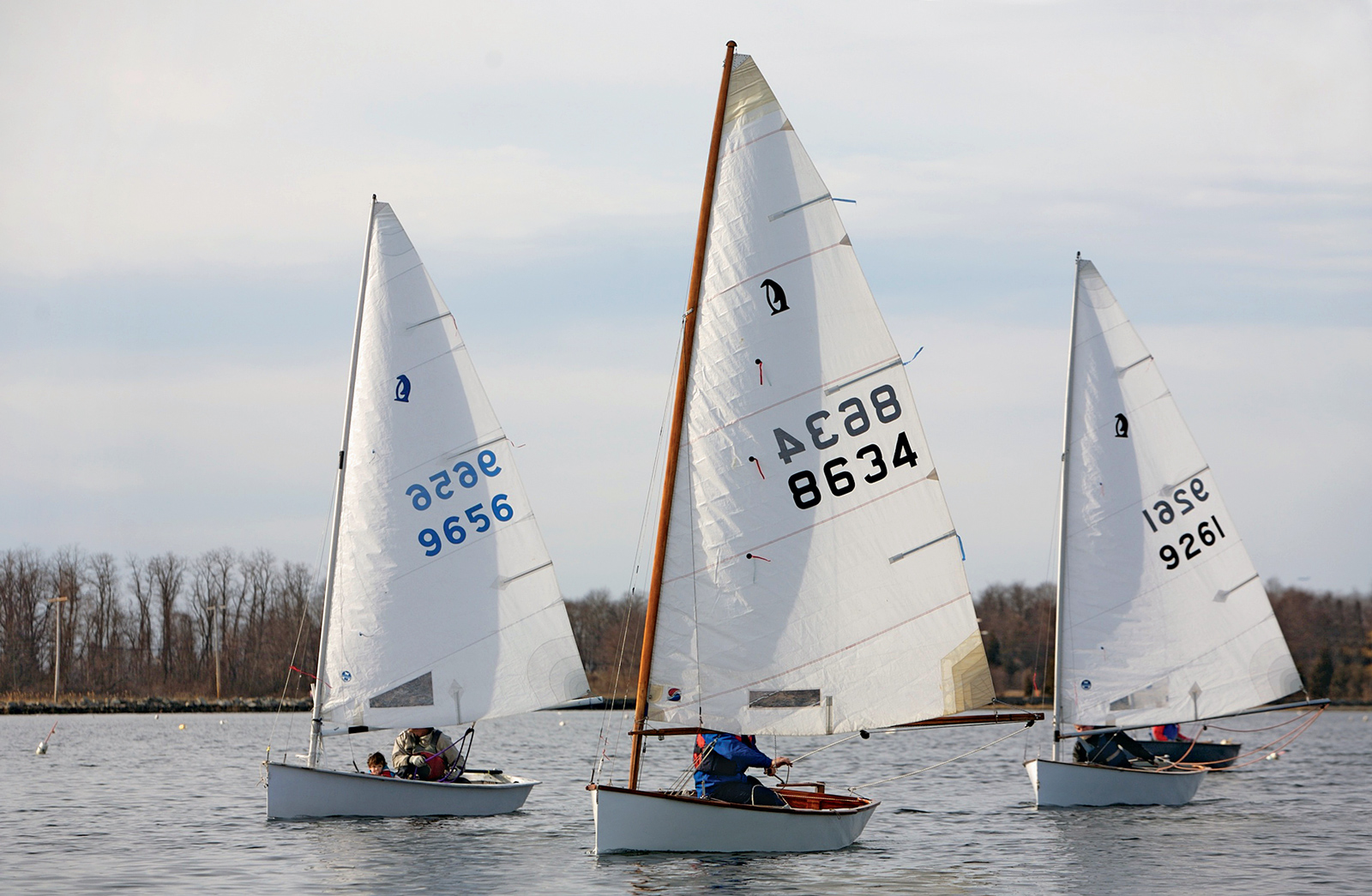 Photo by Peter Airlie
Photo by Peter AirlieIntended as a family-friendly racing dinghy, the Penguin was outshone by light fiberglass boats that came later, yet the design is appealing for teaching sailing and racing, and for daysailing. Frostbite fleets are still active in several states.
Fleets survive in Maryland, Illinois, and Rhode Island, but the design is being rekindled. Bristol Seacraft in Rhode Island started building wooden Penguins in 2008 and is now the only registered builder of what owner Al Nunes sees as a family-friendly classic design. A few years ago, the John Gardner School of Boat Building in Annapolis, Maryland, built a handful of Penguins.
Construction plans, too, are available at $50. The design is the same, Krafft says, except that the rudder profile has been altered. Aluminum masts are allowed, although the rotating wooden wing masts are works of art and are also considered competitive in light breezes. A computer-cut kit for a self-rescuing plywood boat to help spark new interest has also been discussed.
Bud Daily, who has been involved with the class since the early 1980s when he was a sailmaker on Long Island, says the allure of the boats is as much about the people sailing them as the design itself. “The original concept was a family-oriented boat,” he says. “That’s what has always appealed to me. I sail with my wife, and it also gives me an opportunity to teach someone sailing in a competitive environment.” He adds that the boats are not super fast, and with a rotating wing mast and with every sail adjustment leading to the crew, there is a lot to do.
Like many racing dinghies, the boats are easy to sail but hard to sail well. “It humbles a lot of folks,” says Bartlett, referring to the oversized centerboard and hard chines that the boat can trip over in gusty conditions. “If you can sail a Penguin well, you can sail anything.” It is a simple boat. “It’s not a Laser. But for the nostalgia and classic look, it’s hard to beat it.”
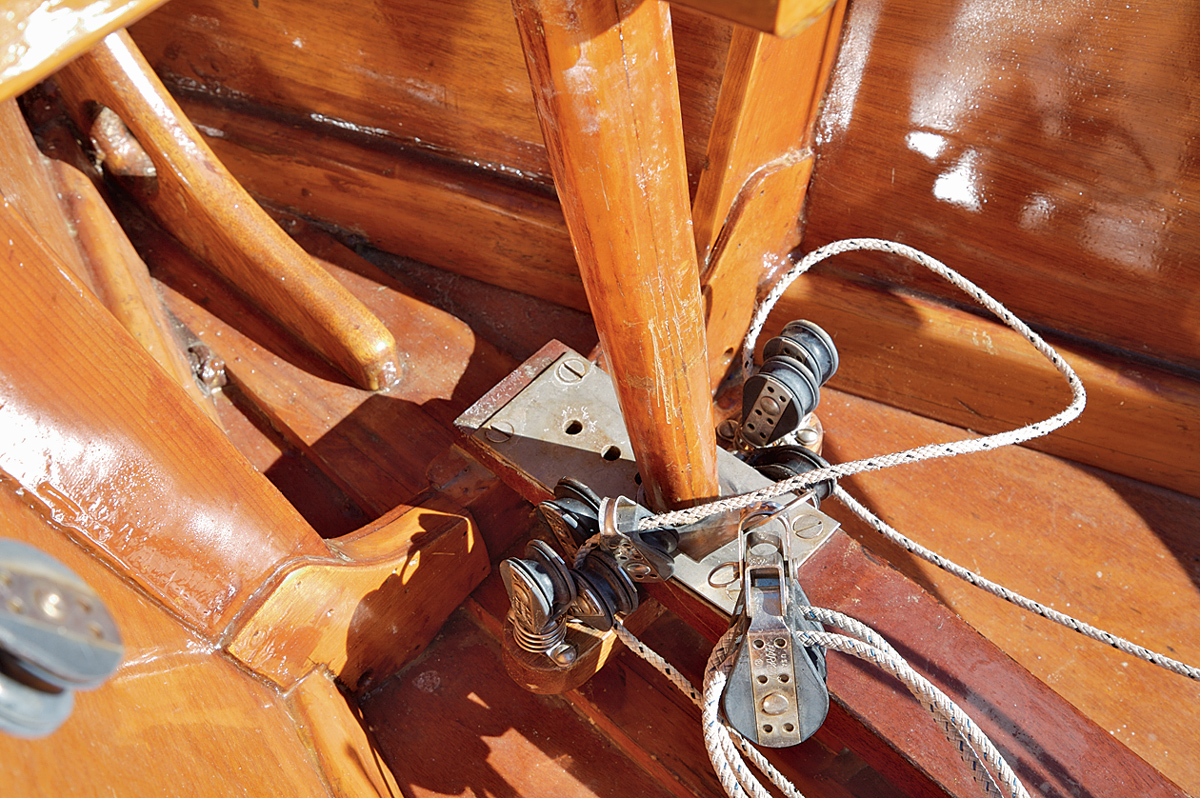 Photo by Peter Airlie
Photo by Peter AirlieA Penguin maststep offers several alternatives for increasing or reducing mast rake, much like more modern racing dinghies.
“It is a classic design,” Krafft says, “very responsive. It doesn’t have the high thrills of other modern dinghies, but it is a beautiful boat to sail for someone who wants to step into a classic little boat.”
Penguins in garages and backyards around the country are just waiting for someone to renew them. Boats in poor condition are often free, and sailable ones can be bought for around $500, but those are snapped up pretty quickly. Pristine boats can sell for $2,000. Some have finely varnished interiors and others have flaking paint and cracked floorboards. For some reason, however, they all sail around the same speed, Krafft says.
The class has weathered the onslaught of new designs over the years by being a keepsake, something you cannot bring yourself to throw away. The fact that stalwarts have maintained the class association while other classes have gone belly-up has also buoyed the reputation of the boats.
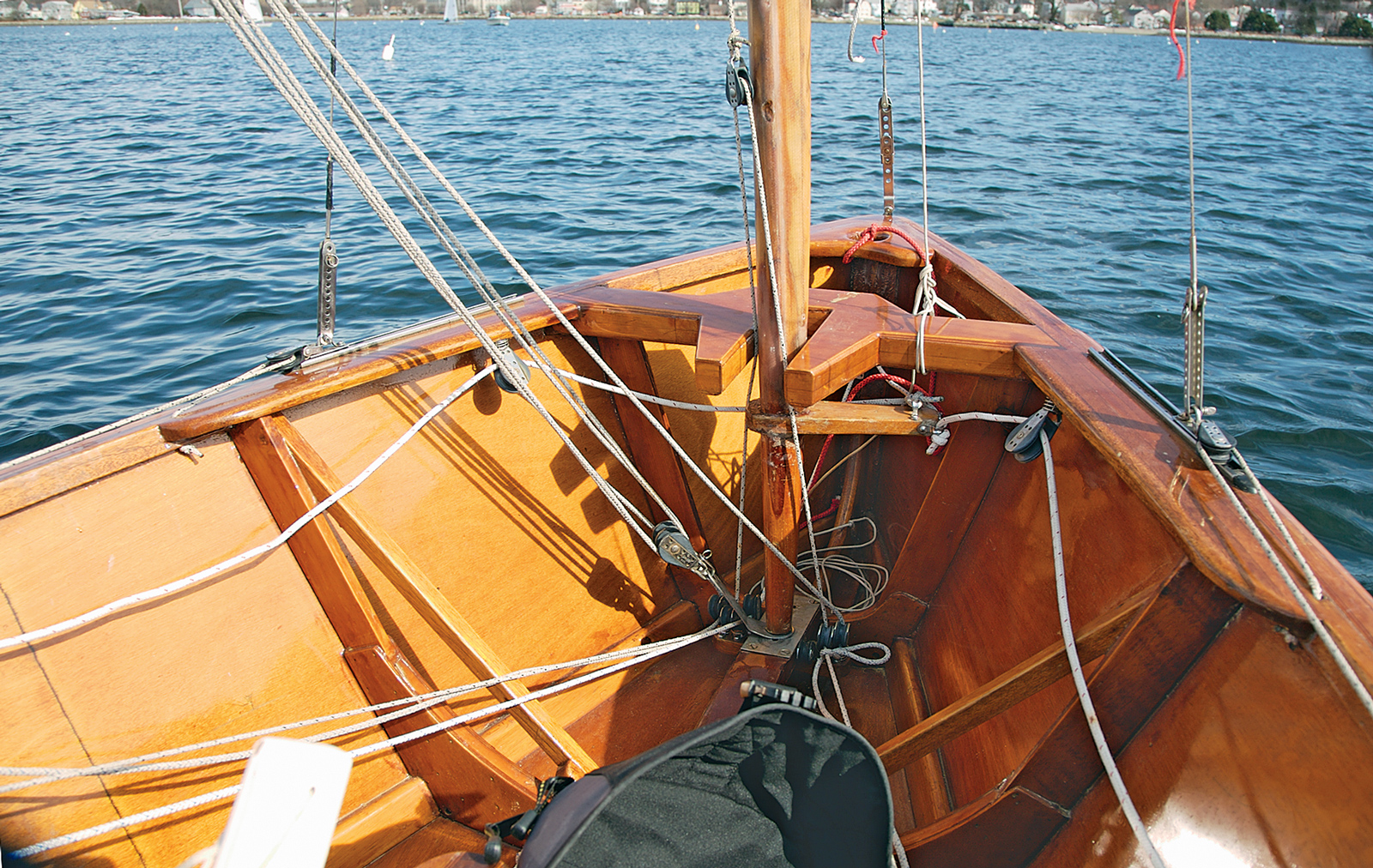 Photo by Peter Airlie
Photo by Peter AirliePenguins have enough lines to keep active sailors happy. Uncommon in sailboats of today is a continuous line affixed to a tiller-like device so that the rotating mast can be adjusted as needed to improve the sail’s angle of attack.
“We’re trying to protect the integrity of the class,” Krafft says. “It doesn’t matter if you are a racer or use your Penguin for daysailing, we’re a place to ask questions, look for parts, or share experiences.” He says he gets e-mails from California, Washington, New Orleans, Tennessee, New England, and Canada from owners put- ting together or maintaining their boats. Like Bartlett, I bought mine back so I can take my daughter racing in a mellow environment when she’s old enough. I also see it as an opportunity to enjoy sunny winter afternoons with friends and their children, since we rarely race anymore and miss being on the water.
They seem like silly little boats at first, and certainly now are considered obscure. But that seems to be the attraction of many little wooden boats—their uniqueness, and rareness. The best part about the Penguin is that whether you are hiked out with a friend inches away from a competitor or sitting on the floorboards on a lazy summer afternoon, you are surrounded by a little bit of sailing history and a lot of class. ![]()
This Boat Profile was published in Small Boats 2010. Plans are available through the Penguin Class Dinghy Association.
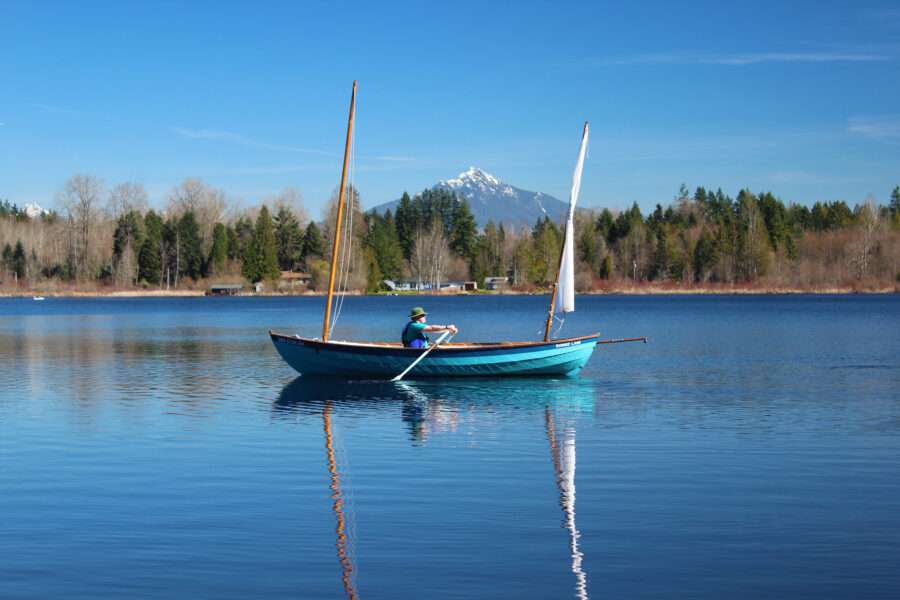
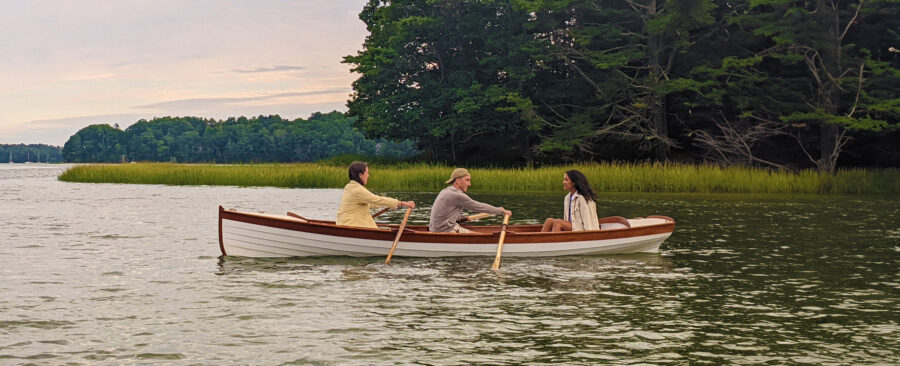
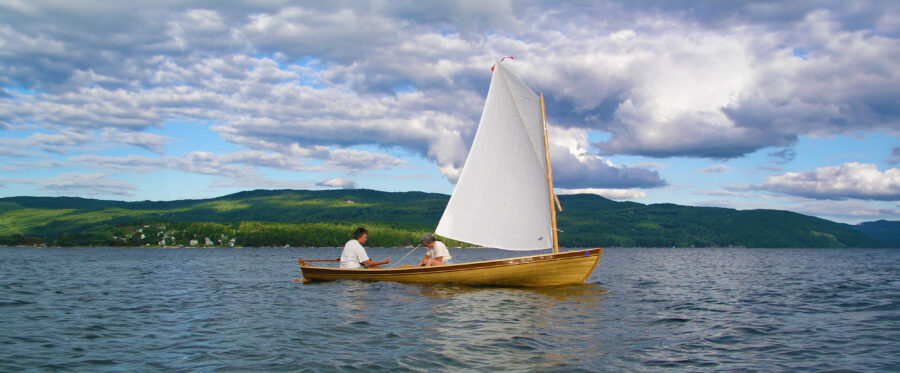
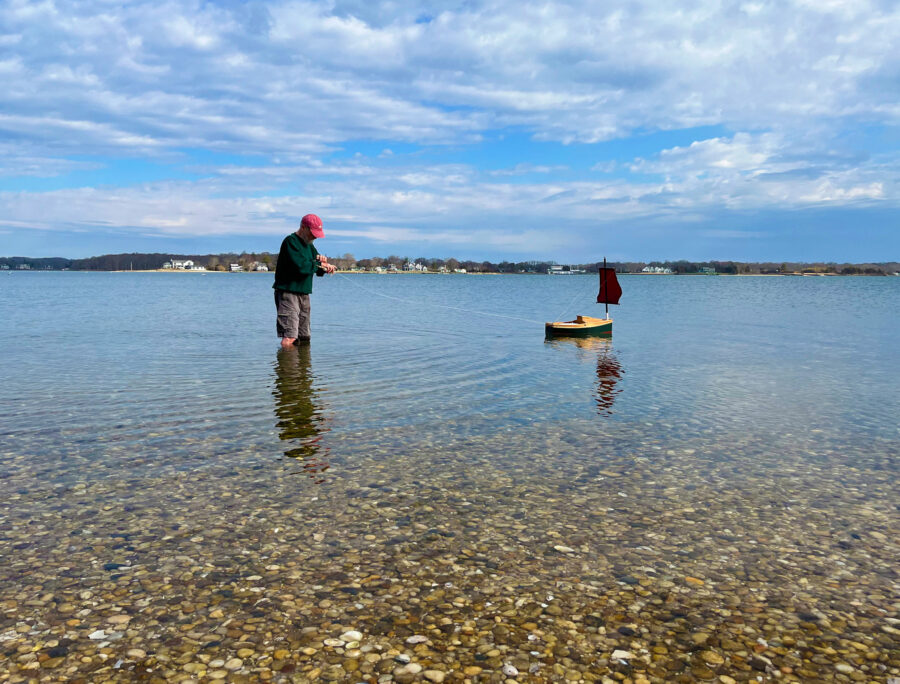
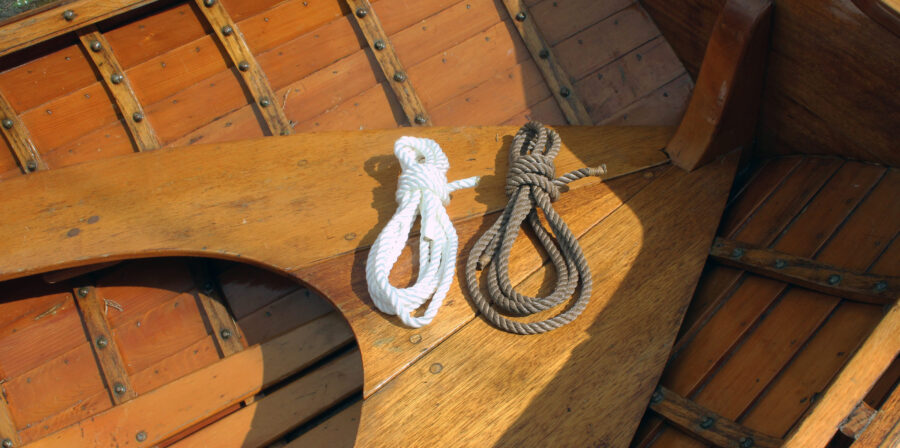
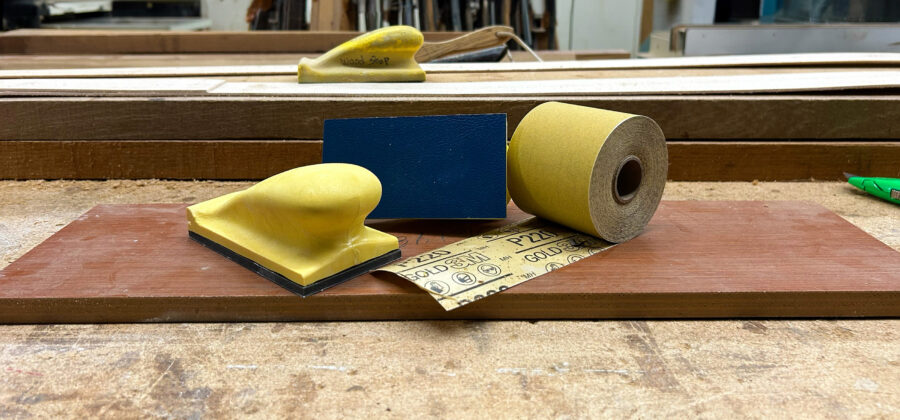
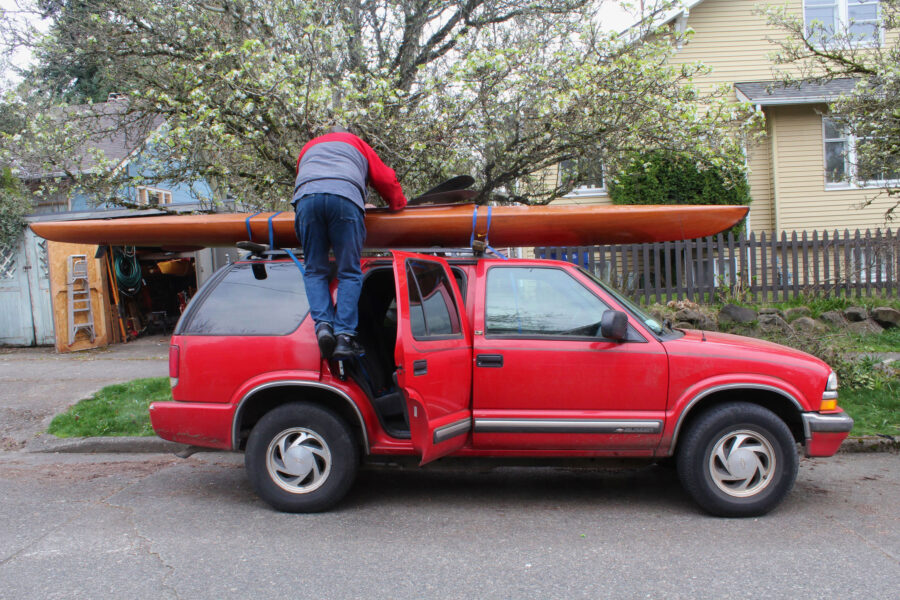
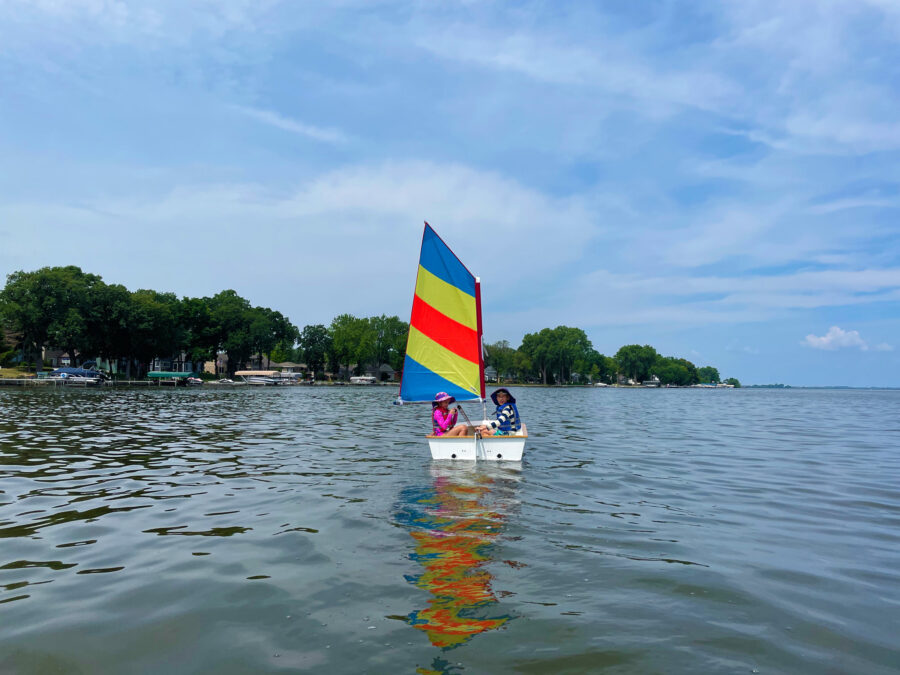
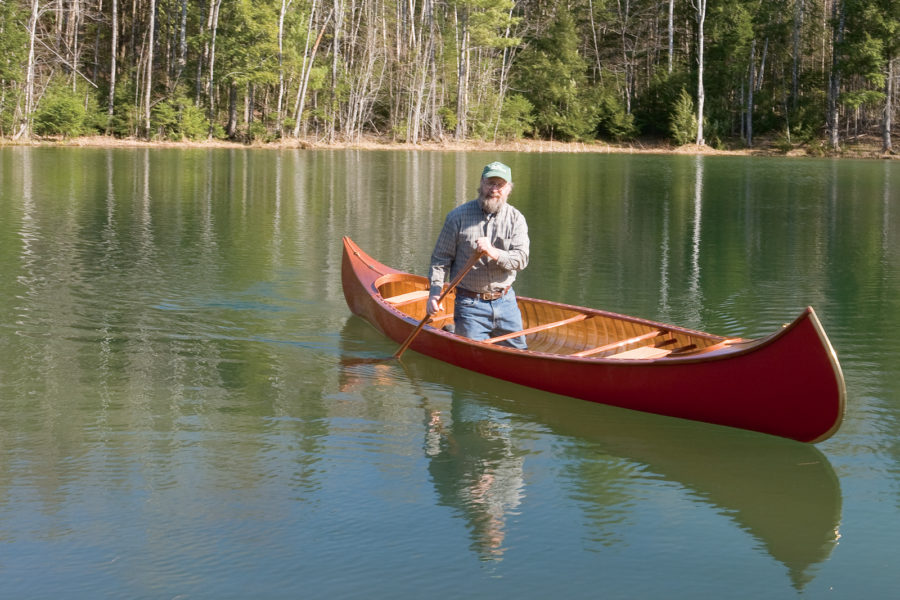
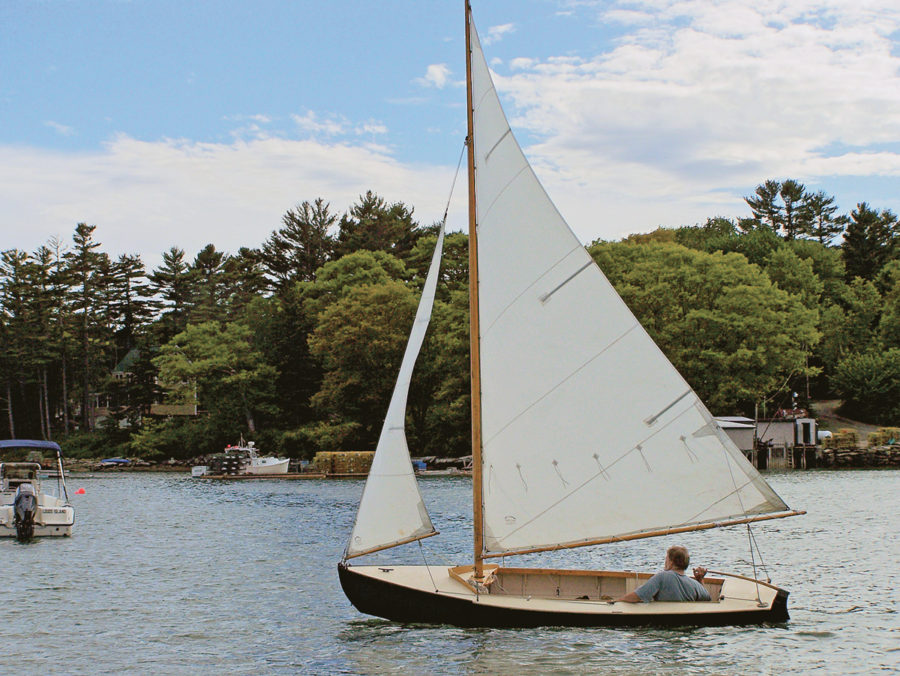
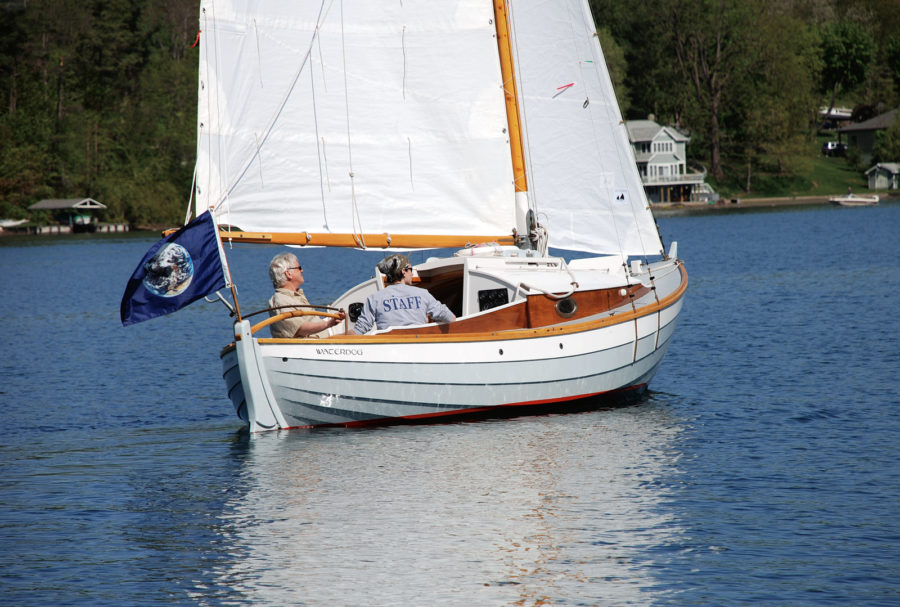
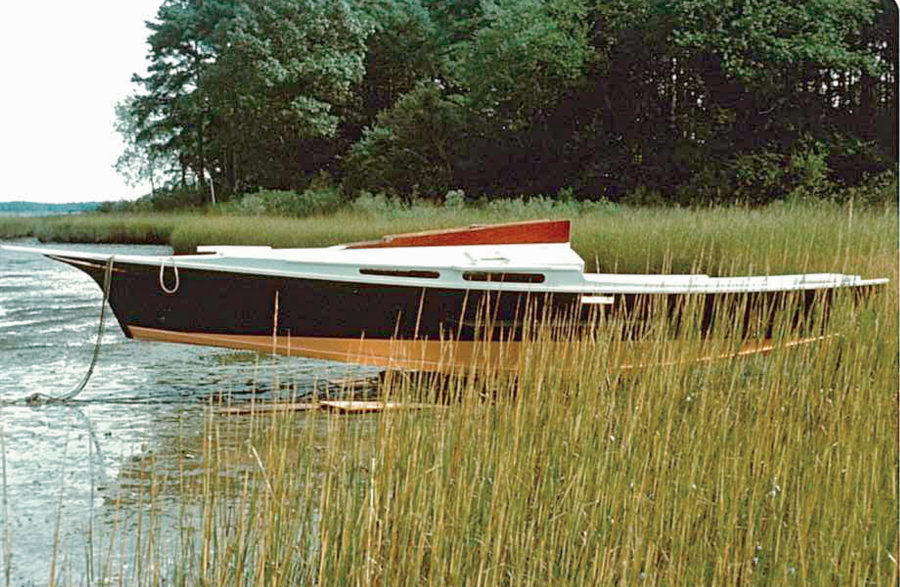
I remember the Penguin well. In the early 60’s I took lessons at the Severn Sailing Association in Annapolis, Maryland, where we raced Cadets. We had group races against the Annapolis Yacht Club across the harbor where they used Penguins. The Cadets had a full sloop rig, but in my memory the boats were fairly evenly matched. We being kids, of course, looked down our noses at the other team’s boats, although we knew perfectly well what nice little sailers they were. It’s great to get some background on the design and evolution of the class.
I would like to take a moment to offer you a small correction. There are no cadets at the Naval Academy. They are called Midshipmen.
Just a point….
For some years we had a wooden Penguin that we sailed around our Maine coast harbor during summers and in the marsh creeks and rivers of Georgia during the rest of the year. One time we capsized right near the harbor master in his boat and he was laughing so hard he could barely help us recover. I sold the boat to someone who lived on the Severn across from the Naval Academy where my nephew was a Midshipman and I’d rowed and raced during my years at a college elsewhere. The Midshipmen were and are outstanding citizens.
The boats were called CADETS. AYC sailed Penguins and 420s and from time to time we sail through each others courses and have running water battles, and other mischief about the Annapolis Harbor. The Penguin was one boat you never want get swamped: 30 seconds of poor judgement equals 2 hours of bailing. But a ton of fun to sail ..
Our family had Penguin #5908 CIAO and we raced with the Penguin fleet in Alamitos Bay in Long Beach California in the mid-60’s. I wonder if #5908 is still racing.
We had a Penguin too. Red of course. We kept it on a sand-dolly at Alamitos Bay (close to Leeway Club). My early memory is being very uncomfortable wearing my life preserver. There was no place to sit! haha. It was my parents first sailboat before they had kids (circa 1954). After that, we also sailed/raced Sabots, Lido 14s, Lasers, Cal20 through ABYC and LBYC.
I would be interested in finding more out about the self rescuing, computer-cut plywood mentioned in the article. Also what was the self-rescuing device used on the fiberglass Penguin?
Wonderful little boats. Learned to sail in a Penguin named YACKETY-YACHT on a lake in upstate New York 65 years ago. I later became an Aviator. The Penguin is like some aircraft. Absolute delight if you stay ahead of her. If not, she’ll bite you. I had more than a few unexpected swims. Thanks for the memories.
I’ve sailed my Penguin since 1974 in Rio de Janeiro. She is still in good shape and has a lot of class. Hearing the noise of the water hitting the plywood hull refreshes my best sailing memories.
Just redid a Jon Wright Penguin. Couldn’t wait to sail her. I have another Penguin that’s been hanging in my loft for 30-plus years. Launched the Jon Wright Penguin. Great sail. Second time out rolled her over leaving the dock.